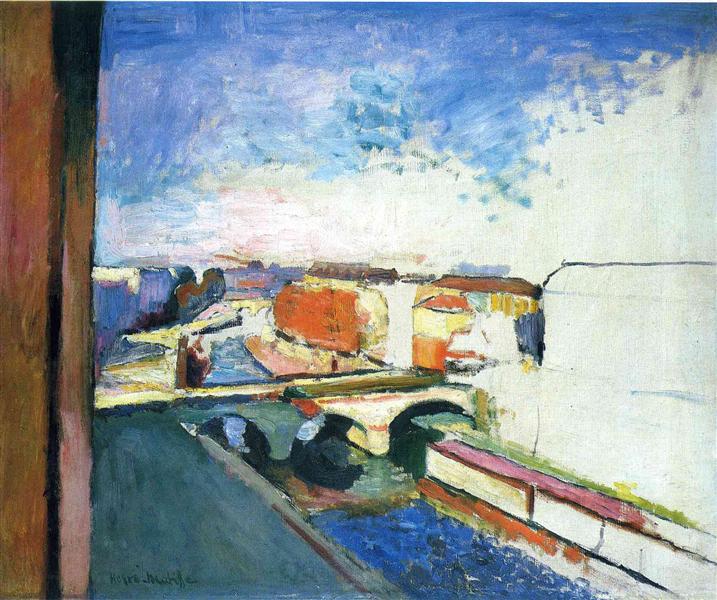Description
The painting "Pont Saint Michel in Paris," created in 1900 by Henri Matisse, is a work that captures the essence of Paris at the end of the 19th century and the beginning of the 20th century. Matisse, known for his fundamental role in the development of Fauvism, offers in this piece a vision that is halfway between Impressionism and the transition towards his unmistakable Fauvist style, characterized by bold use of color and simplification of forms.
The choice of the Pont Saint Michel as a subject is not accidental; the bridge, located in the heart of Paris, symbolizes both change and movement as well as tradition and stability. In the painting, one can observe a dynamic and lively capture of the Parisian atmosphere. Matisse's brushstrokes, although not yet completely freed from the rigor of Impressionism, already show a glimpse of the expressive freedom that would come to dominate his later work.
In terms of composition, Matisse effectively uses the structure of the bridge to guide the viewer's gaze throughout the work. The arches of the bridge rise with an almost ethereal lightness, contrasting with the historical weight that the structure itself carries. The arrangement of the elements in the painting — the bridge, the river, the buildings in the background — generates a sense of order and balance, a characteristic that Matisse would handle with greater freedom in his subsequent Fauvist works.
The use of color is particularly revealing. The grayish and earthy tones of the work, along with soft shades of green and blue, capture the Parisian atmosphere with poetic fidelity. This handling of color not only reflects natural light and atmospheric fluctuations but also a subtlety that is less apparent in his later works, which are more vibrant and explosive in chromatic terms.
The presence of human figures in the painting is minimal but significant. Only a few silhouettes can be distinguished in the distance, perhaps pedestrians crossing the bridge or small boats on the Seine River. These almost spectral figures enhance the immensity of the city and the monumentality of the bridge, serving as a counterpoint to the dominant infrastructure and urban landscape.
In the context of Matisse's artistic development, "Pont Saint Michel in Paris" marks a crucial moment of transition. Although it is clearly influenced by Impressionism, one can already glimpse the experiments with color and form that would define his contribution to modern art. In this work, Matisse not only captures a fragment of Paris but also a fragment of his own artistic journey, balancing between fidelity to observation and the search for his own artistic voice.
To understand this painting within Matisse's overall corpus, it is useful to compare it with his later works such as "The Joy of Life" (1905-1906) and "The Red Room" (1908). In these paintings, Matisse abandons the faithful representation of reality for a more abstract and symbolic vision, using bright colors and simplified forms. However, "Pont Saint Michel in Paris" remains a poignant record of his early stage, where the city of Paris is not just a backdrop but also a discreet protagonist of his artistic exploration.
In summary, "Pont Saint Michel in Paris" is a testimony of a young Matisse in search of his style, a work that balances tradition and modernity, and offers the viewer a window into the intersection of detailed observation and emotional evocation.

